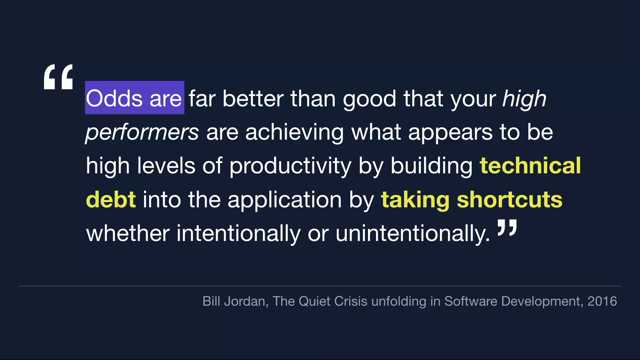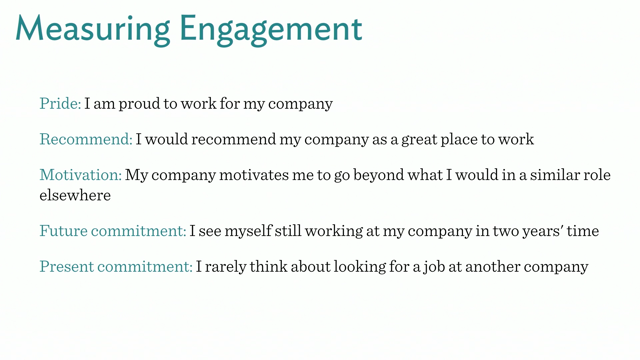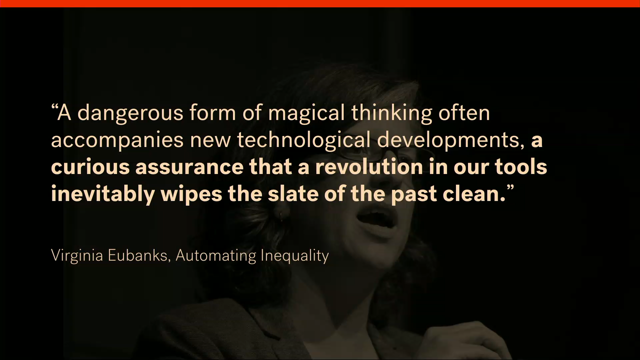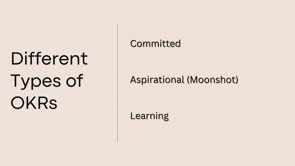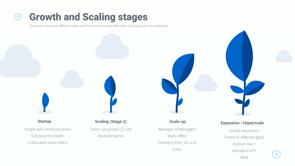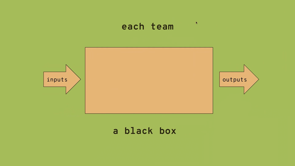The new playbook for 1:1s
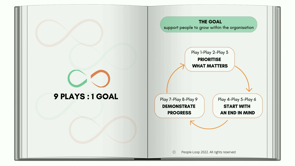
The People Loop: A playbook
We wanted to put together a playbook in its truest sense. Not a white paper and not a manual. But very much a playbook that outlines really practical features that people can use for one-to-ones with their reports.
One-to-One Meetings: A Playbook
The one to ones playbook is about supporting people to grow within the organization. The must have for a playbook is it has to be short and easy to understand. The key number one play in guiding an effective approach is giving everyone an equal chance.
A simple framework to guide One-To-One growth conversations
We have created the DO-LEARN-MEET framework to help employees start meaningful conversations about their growth and progress at work. Every day is an opportunity to grow and develop within the organization in a practical way. Doing your best work, applying new skills and fostering working relationships is how you open opportunities for growth and advancement... our framework gives every employee a way to ask for the support they need.
One to One Outcomes
Although managers invest up to 20% of their time in their 1-to-1s, they have traditionally not had a way to track behavioural outcomes or uplift that results from their conversations. How do you think about tracking what the actual outcomes of those meetings are? Showing return on time invested in 1-to-1s is a key play in the playbook.
The One-To-One Data
What's really important for the employee is they actually are able to demonstrate the progress that they're making. What an organization should be able to demonstrate through data is 1) how proactive employees are in seeking growth conversations and opportunities, 2) how well managers are supporting their people to make progress and 3) how fair and equitable the access to opportunities is across the organisation as a whole .
Tanya Pelly: Hello everyone.
Thank you.
Apologies for the long introduction, but we were mindful that We have different backgrounds to most people in the room from a, technical point of view.
And so wanted to over, explain that a little bit.
But we are really thrilled to be here.
As, John said, we've known John for quite a long time and he's heard us talk about working relationships, connection at work and, effective relationships between people for many, years.
And as we were embarking or our journey to design the People Loop platform he set us this challenge of coming up with a playbook.
And so we took that at its face value and a very much wanted to put together a, playbook in its truest sense.
So not a white paper and not a manual, and not a 40 page guide, but very much a playbook.
That outline that outlines really practical features that that people can use, that all of you can, use in your roles, both as managers and as people who perhaps are managed by others in order to help drive really productive career conversations, the sorts of things that Gretchen was referring to in her talk.
So I wanted to start by just asking for a show of hands of who here has one-on-one meetings with people.
Okay, great.
Warwick Pelly: We're, in the right room Tanya Pelly: And.
Mindful of that l Lunch is coming soon.
We're gonna have a bit of chat and interaction at the end of our formal presentation, but we wanted to start you all chatting to each other about this topic right from the beginning.
So just for 60 seconds or so, just chat, turn to the person next to you and just maybe share with them how much of your time you're actually investing in one-on-ones at the moment with your people.
And what are the goals you have for those one-to-one meetings that you have.
And we may get a, variety of responses in the room, but just have a chat to the people next to you about how you use that time.
Warwick Pelly: Before we start, can someone just in terms of percentage, can anyone just throw me out a number as to what percentage of the time they spend in a given week is on One-to-ones?
25% okay.
Anyone else?
Okay, cool.
Generally we've heard 15 to 20%.
When we go through this playbook, you'll see we've used a little basketball playbook there.
We wanted to make it really easy.
For me, the key thing for managers, is actually, it has to be easier.
So I thought, I've got two kids.
I was gonna bring them here today up with a basketball.
The first play we're gonna go through actually has four steps from here to here, too hard.
Where we need to be is here on the free throw line.
That's the idea of the playbook.
You'll see as you run through the plays.
We've tried to use as few words as we possibly could.
For me, the must have for a playbook, It has to be short and it has to be really easy to understand and all the players have to add up to how we're playing the game.
So if Tan flicks to the next stage, how we're playing the game comes to a single goal, which is supporting people to grow within the organization.
That's what this playbook is about.
There's any number of reasons why we have one-to-ones, sometimes to enhance employee engagement, sometimes to share ideas, sometimes to explore opportunities.
The one-to-ones we're talking about in this playbook are purely about supporting people to grow within the organization.
So if we just keep that in mind as we roll, we'll run through the playbook and ideally leave a fair bit of time for conversation at the end.
Okay.
Tanya Pelly: Yeah.
Great.
Our nine plays are grouped into three groupings.
The first three are all around helping people get ready for one-to-ones.
The second three are around the actual conversations themselves and how to have really purposeful, valuable, and rewarding conversations.
And the third three plays are around actually understanding, demonstrating, and seeing that progress is being made and that there are actually outcomes coming out of these one-to-one session.
So the first play in our playbook, we have two key players, which is the employee who will appear in the Green Circle there and the manager in the orange circle.
There is, however, a critical third player, and this came up in some of the conversation about DEI earlier, and in fact always comes up in conversations around culture and things that we use to support everyone when within an organization.
And that third player is really the, organization itself or those executive leaders who are making the decisions around how things are done across the organization as a whole.
Really, the key number one play in guiding an effective approach to one-to-ones that help people grow and develop at work is that the organization makes it really clear and explicit that part of what the manager/employee conversation time is about, is giving everyone in the organization equity of access to what it is that they need to grow and develop at work.
And again Gretchen touched beautifully on a lot of the data behind this and, the realities of how well this is or is not being done in many organizations.
We've done a lot of surveying and interviewing with people both within tech companies, but also across a whole lot of other industries, and there are some really common elements that, come out from those conversations with view to inequity of, opportunity for advancement or growth.
People who are traditionally who, were even pre pandemic, less visible, less likely to speak up, less likely to be offered opportunities due to either conscious or unconscious biases, you know, that problem's been really recognized a lot more post pandemic.
And so we think the key first step of running this play is to give everyone an equal chance.
That means you get everyone and their manager together and aligned on what it takes to succeed and give everyone just enough structure to have successful conversations.
Warwick Pelly: When we wrote the plays, I wanted to call the play "even chance".
I had to write, give everyone an even chance, 'cause it basically gave a bit of a clearer picture of the play.
We've talked about diversity and inclusion quite a lot in the conversations earlier today.
It's not just about race, it's not just about gender, it's not just about sexuality.
It's also about people's level of introversion and extroversion, people's way of thinking.
Am I a slow thinker?
Am I a fast thinker?
Essentially, unless we can create dedicated time for conversations, which are exclusively about supporting people to grow with in the organization, then when there's untapped talent, I've heard it.
I'm not a HR person, so tell me if I'm wrong.
Everyone says there's not enough to, we have a war for talent.
Either we do.
Or, we're only just tapping into the talent that's most visible and most extroverted, and that's where the opportunities are actually being disproportionately sent towards.
So the first play is, the key play from the organization's perspective is it has to give everyone an even chance.
The second play Tan...
Tanya Pelly: yeah.
So once there's that agreement that, that people, I guess are, set up to succeed.
Warwick Pelly: It's my complicated play.
Four steps.
Tanya Pelly: This is the most complicated play with the most steps and, in fact, deliberately so.
we were hearing when we were probing into problems with currently how people are running one-to-ones.
Many managers were saying, oh, they're good.
And we get there eventually.
But quite often it'd be great if my people were better prepared for the conversations.
If they showed up, at least with a good articulation of what they wanna talk about.
If not that they've perhaps thought through perhaps some potential solutions or options to discuss.
People, employees themselves were saying, you know what, I really, I'd love to be proactive about the conversations that I'm bringing to my manager, but and, I try that, but sometimes I'm not really sure.
I dunno what I don't know.
So sometimes the employees themselves who wanna be proactive are coming up against barriers.
So we think the desired outcome of this next play is that when the conversation starts, it already has momentum.
So there are two parts for that.
The employee has a role, the manager has a role.
The employees play, is, or play number two is to make it easier for the employee to bring up the things that are important to them, that are top of mind for them.
And to do it in a way that provides just enough structure to help them think it through a little on their own before going to their manager's expertise.
So Play two is all about the employee being ready.
Warwick Pelly: And it's a fast track play, but if you don't make it easy, it doesn't work, and if it's not about more, it doesn't work.
We've heard a number of platforms saying employees need to be heard.
We think that's valuable.
Personally, I think what employees really want is more, they want more progress.
They want to feel as though there's a path for them.
So from our point of view, it's unashamedly about actually making this about how you can give more to the employees.
And the next play, which is my play, and ask more, ask less from the managers.
If you don't ask for less and give more, don't bother having the conversation.
We've spoken to a number of managers.
The time is extraordinary.
25% of my time on my in one-to-ones.
Now I know they're not all about progressing within the organization.
That's an enormous investment of time, and it's the only investment that I've seen within larger organizations that doesn't ask for a return, which we'll come back to a bit later.
But it's bizarre.
It's the time, but it's also bandwidth.
We've asked a number of managers how they try and have better one-to-ones, and people have told us as much as 15 to 20 minutes preparation for each one-to-one.
You take your 25% and then it becomes 35, 40, where's the return?
So through people loop, first step is putting a couple of those things forward, running this cool play, which goes four steps.
At that point in time the manager is, it's either one on the one-to-one or it's not.
Gives a really way easy way for the manager to triage the conversation, which will take us, I think, to the next play.
Sorry lost my focus there.
One thing about making those conversations valuable, and this is unashamedly following a Microsoft person.
This is something that I drew from a conversation which I heard Satya Nadella have on a podcast.
He said, I don't have a to-do list.
I have a to-do list.
I have a to learn list, and I have a to meet list, and they're the three things that together help me do my job.
We thought about this in the context of actually how you advance in your career, and I know we've talked a lot today about technical skills, which is the to learn list.
The to-do list, which really is about exploring better ways of working and getting stuff out of the way that's in the way is really important 'cause you can't do your best work if stuff's in the way.
The to meet list is huge.
Exploring working relationships and expanding them across the organization.
Currently, the surveys we did between 50 and 100 people said disproportionately it was hugely significant, important thing, but it never made its way into one-to-ones.
So the way that's just a people loop screen when someone's raising a conversation, they have to break it into do learn on, meet.
And if you can think of anything to do with an issue which has been raised in a one-to-one, or you may well want to raise it, most likely, that you can basically classify that into do, learn or meet.
Tanya Pelly: And possibly into more than one of those categories.
Bear in mind they, they overlap.
We've just found this a really useful framework to help people think through and to help employees think through the issues that they're bringing up that are about their growth and development.
But in that very much every every day is an opportunity to grow and develop within the organization.
Okay.
Again, opportunity for you all to have a bit of a chat to each other.
I just wonder if you could each think of an example of a recent conversation you've had with, one of your team members about their growth and development or a number of topics and see if you can fit them into these categories Warwick Pelly: or your own Tanya Pelley: Yeah.
Or something that you, yourself have brought up about your own growth and development.
Just try it on the size and, have a bit of a chat to each other about those categories and, what might fit where.
Warwick Pelly: If there's something you could write down that's come up in a conversation, that would be valuable and then think it after, as you write it down, think is it a do thing?
Is it a learn thing or is it a meet thing?
So I'll give you about 60 seconds.
Thank you everybody.
We'll get another chance to have a chat at the end, I hope.
But we'll run through a couple of the plays and talk a little bit about how we try and measure outcomes.
But I'll leave the plays to my esteemed colleague.
Tanya Pelly: The observant ones of you who have noticed.
We have the same surname, so we're married and we work together, so we're very good at most boundaries but every now and then we struggle with what what do we call each other in an event like this?
The other thing we still do is talk over each other, so I just wanted to call that out in case that happens in the next half an hour or so.
Warwick Pelly: It's not a gender specific thing actually.
Tanya Pelly: Most definitely not.
So thanks, for starting on these conversations and there'll be certainly time towards the end of this session to, pick up on, on those bits that you've already started talking about.
I just wanna come to the next three plays now, and the next three plays are all about the actual one-to-one conversations themselves.
These in our playbook are structured around the three categories of do/learn/meat.
The, order we've got them in the playbook here is learn, do, meet.
So play number four is about helping people turn learning into doing.
So turning knowledge and new knowledge actually into practice and practice that comes to life within the organization and is for the benefit of the person who's learning and developing, but also for the benefit, obviously of their teams and of the organization as a whole.
So the principles of all of these conversation plays are common.
So whether you're talking about a learn topic, a do topic, or a meet topic, we think there are a couple of key processes to follow.
The first is what's illustrated here on the basketball court which is basically that the manager leads a coaching conversation, and I think most of us are across the benefits of a coaching approach as opposed to a, telling approach in helping our people to grow and develop.
So, this process of supporting a conversation that leads to exploration of the topic, agreement on where the person actually is at the moment and then determining what action they're gonna take.
One of my direct reports who I, managed within one of the big organizations I worked for he came to me and in fact had received a lot of feedback about the fact that he really needed to improve his skills in client presentation and presenting the outputs of his analysis to clients.
He'd in fact been put off the team he was currently on because the, leader of that project wasn't happy with his performance.
So we worked a lot.
So he came to me saying, I, I need practice and experience presenting to clients.
And yes, I said, that's great and it's really good that's your goal, but let's really get a sense of where you're at right now.
We were able to break down and what we've codified into the way we are designing peopleLoop is a, three step process that represents the progress someone is making.
So for this example, my colleague thought he was ready to just go out and be doing it, and that's how you know, in at the deep end.
that's how you learn Warwick Pelly: he wanted to be here, Tanya Pelly: which is a common Warwick Pelley: an experience but he wasn't.
Tanya Pelly: Thank you for talking over me.
Warwick Pelly: I thought it was good.
Tanya Pelly: So he, was ready to just go and have that experience, if I do it over and over, then I eventually I'll get really good.
And we worked out that there may be a step before that would really help him and help him get ready for that.
And that would be to go spend some time with someone else who was already good at it within the organization so that he could watch and learn vicariously and just that idea of shadowing someone within the organization to really help people build their confidence.
In fact, what he needed first before he was even ready for that, was a bit more education and awareness about what were the key principles, what were the techniques that he could use, and in fact, he ended up starting by getting some old presentations that he understood the content of and recording himself on a Loom, practicing presenting to it.
And that just helped him give that an, that was really like a, experiential learning experience before he was then ready to go and watch someone else do it, and then he was ready to go and practice himself.
So when we talk about creating safe opportunities for people to, to fail or fail gently or you wanna really walk people through a process that helps them learn, make mistakes, but it's all okay because you've set it up in a really structured way that leads 'em towards their ultimate goal.
And so in the end, his old project manager who kicked him off the project, was delighted to have him back once he'd been through this process.
So what that example is hopefully showing is that we can take a structured and deliberate approach to helping people think about their growth and development.
And sometimes people will come along saying, I'm ready for this.
I just wanna go and take over the lead role in the next project that comes.
And as a manager really they're not ready for that.
One second.
Sorry.
Warwick Pelly: Sorry.
I was asking to butt in Tanya Pelly: no go, butt in Warwick Pelly: guys, we talked about the learn one.
Saw, a few people nodding.
A really good one is the meet function.
Someone says, I wanna do a project with the head of the health team, and can you introduce me to them?
The manager might say, yeah, I could, but I'm not going to.
Let's go back here.
Let's go to the first step, which is clarity around why you, why them, and why now.
Once we get that, we can get clear on the ideas that you're gonna have, you're gonna bring to the next person so that when you get here, you actually have a valuable conversation.
Similar principle applies with basically how we do them, the do function, but it's just different content.
But the process is the same.
So what we're trying to do in each of the conversations we have is actually direct people towards an outcome that matters.
And for me, those three outcomes are actually turning learning into doing, making sure that stuff's in your way, gets out of your way.
And the third one is that you actually start building better relationships across the organization.
So there's the three things, and play five and play six would be quite quick on my, Tanya Pelly: yeah.
And just a final point on these, the what the, team member or employee is gaining from this is better practical expertise, what the organization is gaining, and someone mentioned earlier that the C-Suite is really interested in seeing outcomes and seeing that things are progressing.
What the organization should be gaining then in a measurable way eventually is a, is an uplifting capability across the organization.
If we look to the, play that's around doing, that can be really practical things that barriers, ways of working, things that are stopping people doing their best work that you as a manager can help them solve for.
So you wanna be removing barriers and helping people get their work done.
And for the whole organization, what that delivers is a productivity uplift And play number six, which is the meet example that Warwick was just acting out on the stage.
Is to help people connect, but in a meaningful, purposeful, and intentional way, that is gonna lead hopefully to some form of work collaboration.
And there's also time for catching up socially and having coffee and building those other sorts of relationships, those things are all really important and we're not suggesting that they don't happen.
But in terms of purposeful conversations around growth and development meeting people must have a goal and for the organization, that brings an uplift in internal networks, and there's a lot of data showing if you have strong internal networks, guess what?
You stay in the organization.
If you have strong external networks, you leave the organization.
Warwick Pelly: There's some great numbers around that.
The study that I've referred to is 122% more likely to leave than to stay if you have strong internal networks, if you have strong external networks, you're 110% more likely to leave.
So in all, let's put those two together.
Tanya Pelly: In all of these plays, we, this idea of progress and outcome becomes really important.
So you're, having a conversation and it can, should still be a human interaction.
And and, of course you're two human beings talking to each other and that should never be replaced.
But there can be this thread of structure and again, just enough structure so that everyone feels things are progressing in a positive direction.
So for the third invitation now for, you to all have a, bit of a chat with each other, I just would invite you to.
Share how you, when you have your one-to-ones either from a manager or a team member perspective, how do you think about outcomes?
How do you think about tracking or, looking at progress or what the actual outcomes of those meetings are?
And hopefully there's a, variety of sort of views and approaches in the room.
So maybe just a minute or so on that and then we'll come back for the last three plays.
Warwick Pelly: I'll throw in the idea of how do you track return on time invested as well.
So just have a minute and then we'll take about two minutes to finish.
Thanks everybody.
In the interest of time and making sure we get to lunch on time, I think we've got about nine or so minutes to go, we'll take about three of them and then we'll work from there.
My big thing with peopleLoop I'm an economist by training.
Everything comes back to numbers.
If it doesn't make sense, why are we doing it?
We talk about this, as I said earlier today, there's nothing else you would spend 25% of our time at work with and not ask for a metric to measure the impact that we're having.
From a more personal perspective, Tanya managed a team that grew from seven people to 90 and three years.
She wasn't the manager for everyone, but she, put her heart and soul into supporting the people to grow within that organization.
It was one of the three principles who really did, but she never really knew what impact she was having.
So it became thankless, continually putting yourself out, trying to actually support people to grow and develop.
But you have no metrics.
To know what impact you're having or what the return is.
Tanya Pelly: Can I just rephrase that a little please?
'cause that is the scenario, but I, knew the impact I was having 'cause I knew at least five or six people didn't leave the organization because of direct interventions and conversations that I had with them and other people I then connected them with and so on.
But none of that was measured by the organization or acknowledged in any way as part of a KPI or, something that that was part of my role.
And that's not an uncommon scenario.
I have, leading organizations are, really starting to change things around that.
And the definition of performance is being broadened as it should be to include a whole lot of other metrics.
Warwick Pelly: If success looks like the impact you have on other people's success, how are we measuring it?
This is what we're trying to do with peopleLoop to make those outcomes with the one-to-ones visible and measurable, both for the manager, Tan pop to the next slide if you can.
Yep.
How we do that, and this is, we talked about this before, most people have heard about the four E's, where you start with an education piece, you move to exposure, you have experience, and then you get evaluated on this side of the equation.
The situation Tanya talked about before was her managee thought he wanted to be at Experience.
The conversation with his manager goes 'whoa, you're not there.
You're back here.
Let's come back here.
That's okay'.
So acknowledging him, that he wants to get there is terrific, but he starts here, starts with the education, moves through it.
When we close a conversation on peopleLoop, it tracks the change that's occurred and tracks the satisfaction that the individual has with the change.
Tan, can you pop to the next slide?
Yep.
That's one way we capture the data.
There's others, but that's a simple way.
What's really important for the employee is they actually are able to demonstrate the progress that they're making.
Right there is what we've got down the bottom is a slide of basically the archive of conversations.
There's also a slide showing that conversations in progress.
If an employee has a dozen conversations on the go about improving their skills, expanding their network, getting things outta the way, they're not going anywhere.
They're supported there.
Unfortunately, the data tends to not be as transparent as it could to managers, as employees often held within executive and HR.
The last slide is actually Tan...
The organizational slide.
Show me the impact of what I'm making.
What we're trying to do is to get everyone matched with the right managers, so everything's from the free throw line.
What an organization should be able to track is how much time they're putting into these one-to-ones, what organizational uplift that's happening from a capability perspective, from a productivity perspective, and from a network perspective.
Naturally, the data ties in to all that.
So for mine, if we don't have the data, we don't have a reason to enter the door.
Someone said to me once, show me the data or close the door on the out and don't, let it hit you as you walk out the door.
It's very much where we're coming from and we're really trying to build something that supports people to actually be able to justify their one-to-ones and actually make them the best for managers and employees.
So that's it for me.
Tanya Pelly: So I'm not sure timing wise how much we have left, but we've got a few prompts there if there's more time for talking.
Otherwise, thank you all very much for your attention.
Made famous by the likes of Mark Zuckerberg, and taken up widely during the pandemic, the 1-to-1 has become the go to meeting format for people managers in remote and distributed work.
But often, instead of helping develop your people better, 1-to-1s can get bogged down on working out what to talk about, or turn into a laundry list of project check-ins….So, what is the best way to approach your 1-to-1s, to set your people up for success?
In this presentation, Tanya and Warwick Pelly share their research on 1:1s – and outline how you can create dedicated, regular conversations that help your employees take greater ownership of their growth within your organisation.
